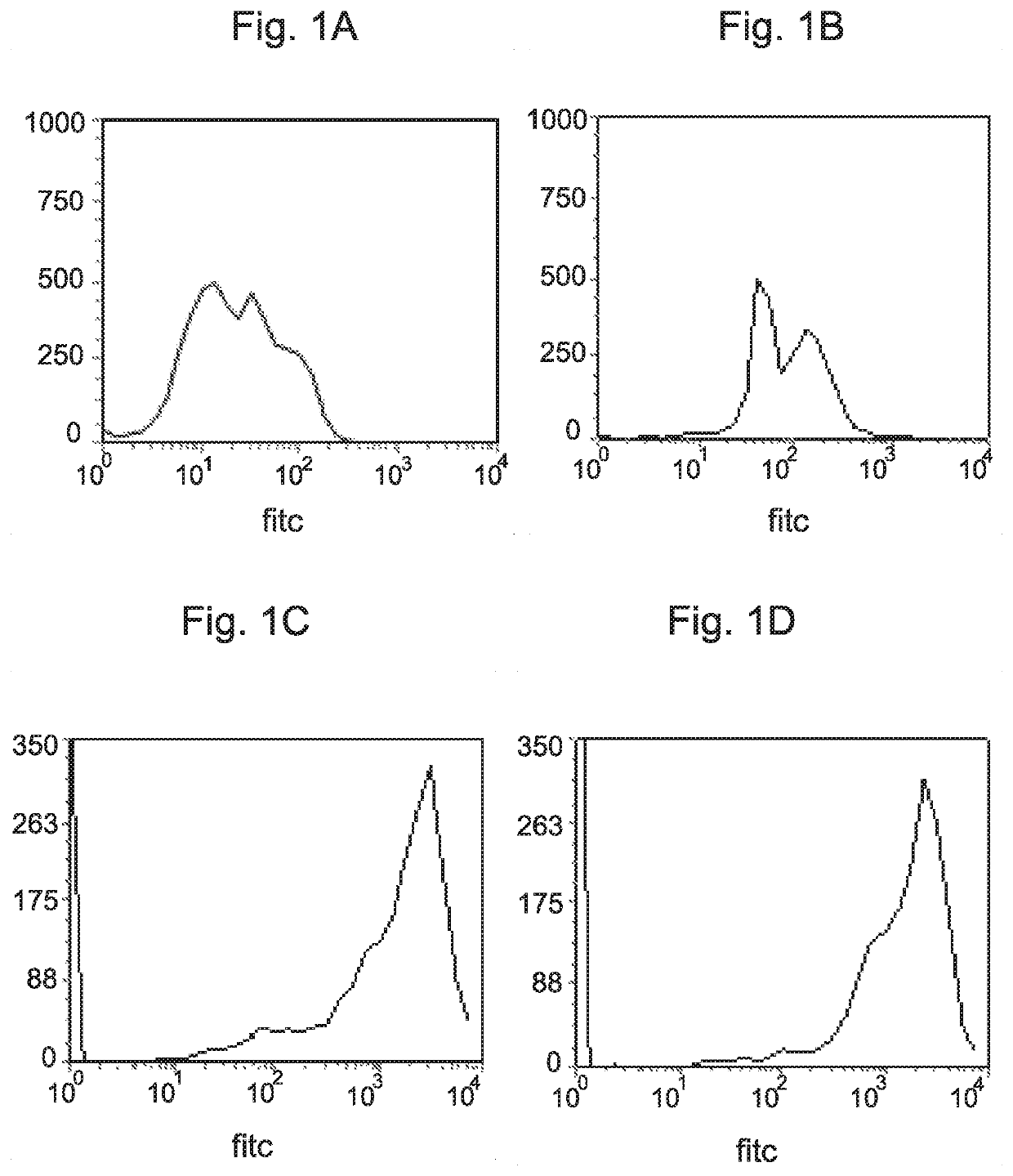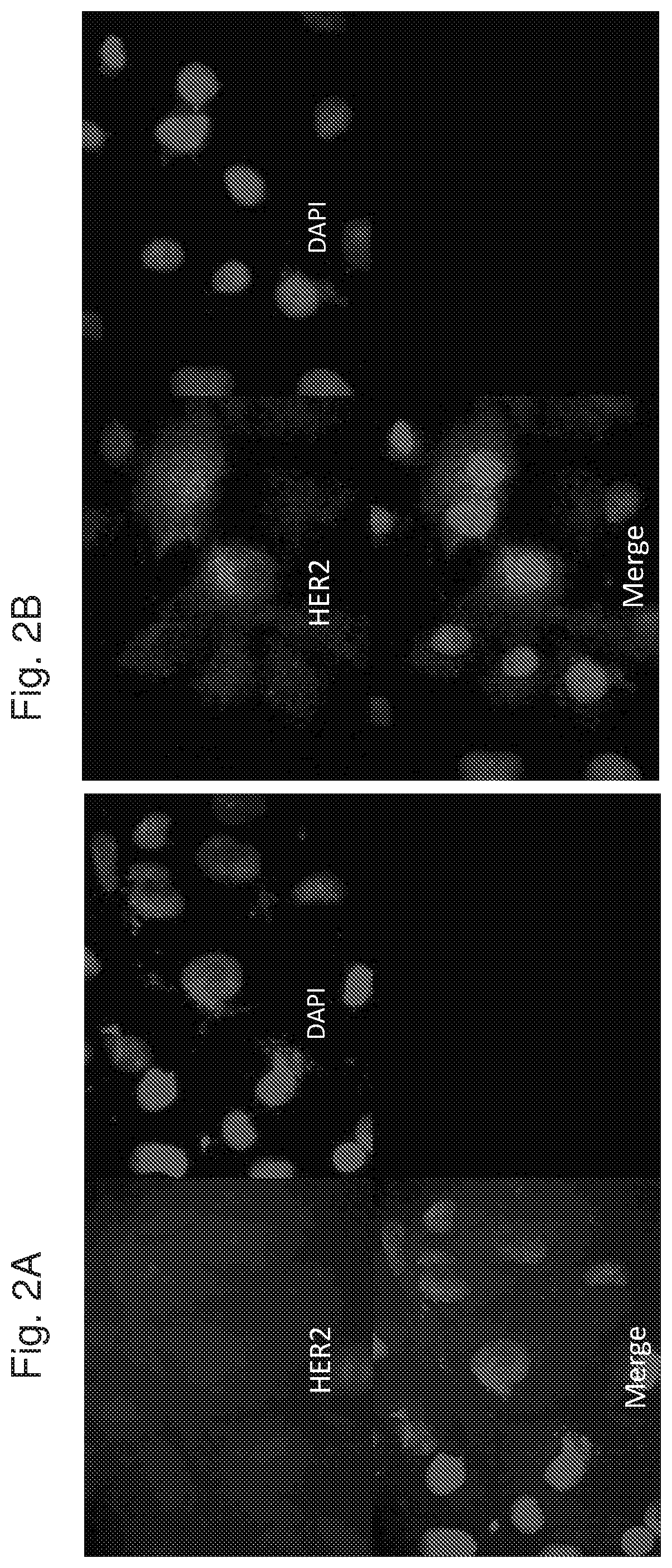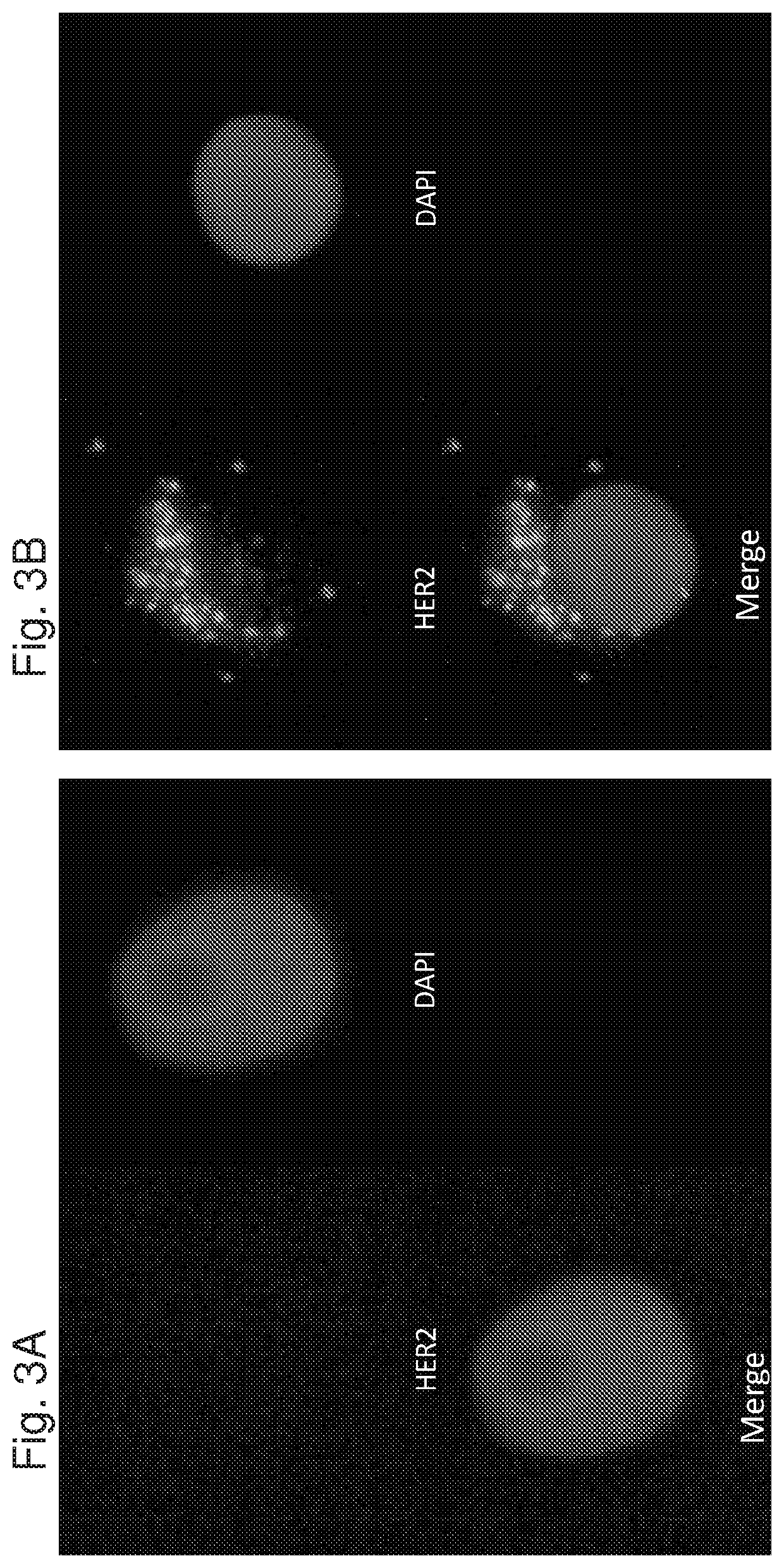A method of sensitizing cancer cells to Anti-cancer treatment
a technology of sensitizing cancer cells to cancer treatment and cancer, applied in the field of cancer treatment, can solve the problems of limited treatment options, incomplete effectiveness of current anticancer therapies, and limited cytotoxic chemotherapy or radiotherapy of cancer
- Summary
- Abstract
- Description
- Claims
- Application Information
AI Technical Summary
Benefits of technology
Problems solved by technology
Method used
Image
Examples
example 1
[0318]Treatment of Triple Negative Breast Cancer Cells with APC1 Increases Expression of HER2 Receptor on the Cell Surface
[0319]As indicated above, triple negative breast cancer (TNBC) is defined inter alia by the lack of expression of estrogen receptor (ER) and progesterone receptor (PR) and the lack of expression or amplification of human epidermal growth factor receptor 2 (HER2).
[0320]The peptide termed herein “APC1”, having the amino acid sequence EKGAAFSPIYPRRK (denoted by SEQ ID NO: 1), consists of the 14 C-terminal amino acid residues of the peptide KTPAF50 that was previously found to affect viability and proliferation of cancer cells in vitro and in mice (3, 4). The effect of administration of APC1 to MDA-MB-231 cells that are known to be triple negative breast cancer cells (and do not express HER2) was first examined by FACS analysis, as described above, and is demonstrated in FIG. 1.
[0321]Briefly, APC1 was administered to MDA-MB-231 cells as detailed above, in multiple do...
example 2
[0329]The Effect of Kadcyla on MDA-MB-231 Cells Treated with APC1
[0330]The above results demonstrate that administration of APC1 to TNBC cells enhances or increases HER2 expression at least on the cell surface and that APC1 may thus be used as an agent that increases the susceptibility of these cells to any treatment targeting HER2, for example antibodies directed to HER2.
[0331]In order to examine whether APC1 indeed increases the susceptibility of TNBC cells to treatment targeting HER2. MDA-MB-231 cells were first administered with APC1 and then with Kadcyla, as described above. Kadcyla is an antibody-drug conjugate (ADC) that combines the mechanisms of action of trastuzumab (an antibody directed to HER2, also known as Herceptin) and the chemotherapeutic molecule emtansine (DM1), in one medicine.
[0332]Briefly, cells were first administered with two doses of APC1 (250 μg / ml each, with incubation periods of 48 and 24 hours after the first and second administration, respectively) and ...
example 3
[0340]Expression of HER2 Receptor on MDA-MB-231 Tumor Cells in Mice Treated with APC1
[0341]APC1 was also shown to increase the expression of HER2 on TNBC cells (MDA-MB-231) in mice injected with the tumor cells, as detailed below.
[0342]Female Balb / C Nude mice (5-6 weeks old) were intraperitoneally injected with 8×106 MDA-MB-231 cells. After the tumors reached the size of 0.5 cm×0.5 cm (usually after five days) mice were injected with APC1 (350 μg per mouse) three times per week, for two weeks (namely on Sunday, Tuesday and Thursday for 2 weeks, 6 injections total).
[0343]In order to monitor the effect of APC1 on MDA-MB-231 tumor cells grown in mice, HER2 Immunohistochemistry of tumor sections was performed. As demonstrated in FIG. 8, while in control cells (FIG. 8A, obtained from mice treated with saline) there was no observed expression of HER2 on the cell surface, in cells obtained from mice treated with APC1 (FIG. 8B) there was a clear HER2 expression.
[0344]In view of the above an...
PUM
| Property | Measurement | Unit |
|---|---|---|
| concentration | aaaaa | aaaaa |
| concentration | aaaaa | aaaaa |
| concentration | aaaaa | aaaaa |
Abstract
Description
Claims
Application Information
 Login to View More
Login to View More - R&D
- Intellectual Property
- Life Sciences
- Materials
- Tech Scout
- Unparalleled Data Quality
- Higher Quality Content
- 60% Fewer Hallucinations
Browse by: Latest US Patents, China's latest patents, Technical Efficacy Thesaurus, Application Domain, Technology Topic, Popular Technical Reports.
© 2025 PatSnap. All rights reserved.Legal|Privacy policy|Modern Slavery Act Transparency Statement|Sitemap|About US| Contact US: help@patsnap.com



